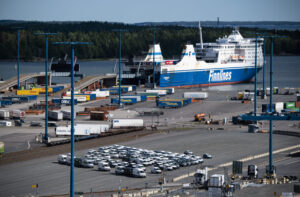President Donald Trump has announced that the US is nearing the completion of several trade agreements, prompting a delay in the implementation of sweeping new tariffs.
The tariffs, introduced in April as part of the “Liberation Day” plan, feature a two-tier system: a 10 per cent base tariff for most countries, with additional “reciprocal” tariffs reaching up to 50 per cent for nations deemed to have unfair trade practices.
According to Reuters, the 9 July deadline offers a temporary reprieve for negotiations.
If agreements are not reached, tariffs will revert to their earlier, higher levels — ranging roughly between 10 per cent and 50 per cent depending on the country and product category — starting 1 August.
Trump has also proposed a 10 per cent surcharge on goods from BRICS countries, though this remains under consideration and could further escalate trade tensions.
Lars Jensen, CEO of Vespucci Maritime, stated that US Treasury Secretary, Scott Bessent, has confirmed several major trade deals are nearing completion, with official announcements expected in the coming days.
READ: US companies face pressure to raise prices due to tariffs
Talks with key partners such as India and the European Union (EU) are progressing, while smaller nations face looming tariff increases.
Reuters revealed that Thailand has offered expanded market access and significant Boeing purchases to avoid tariffs.
Recent agreements with the UK and Vietnam serve as templates, where US goods gained tariff-free access in exchange for reduced import quotas on local exports.
The US-UK deal, recently signed, allows British carmakers to export up to 100,000 vehicles annually to the US at a reduced 10 per cent tariff, down from 27.5 per cent.
READ: US court concludes Trump tariffs exceeded legal authority
BBC reported that tariffs on UK aerospace exports have been eliminated, but steel and aluminum tariffs remain at 25 per cent, with potential increases if no further agreement is reached by 9 July.
Despite this, White House adviser, Kevin Hassett, indicated some flexibility may exist, noting that 1 August marks the start of enforcement, not a hard cut-off for deals.
Successful deals could boost US port volumes by encouraging early imports and securing long-term trade flows.
Conversely, broad tariff imposition may prompt cargo rerouting, reshaping port activity and maritime logistics.
As trade policy remains a central economic tool, the coming weeks will be pivotal for global supply chain planning.








